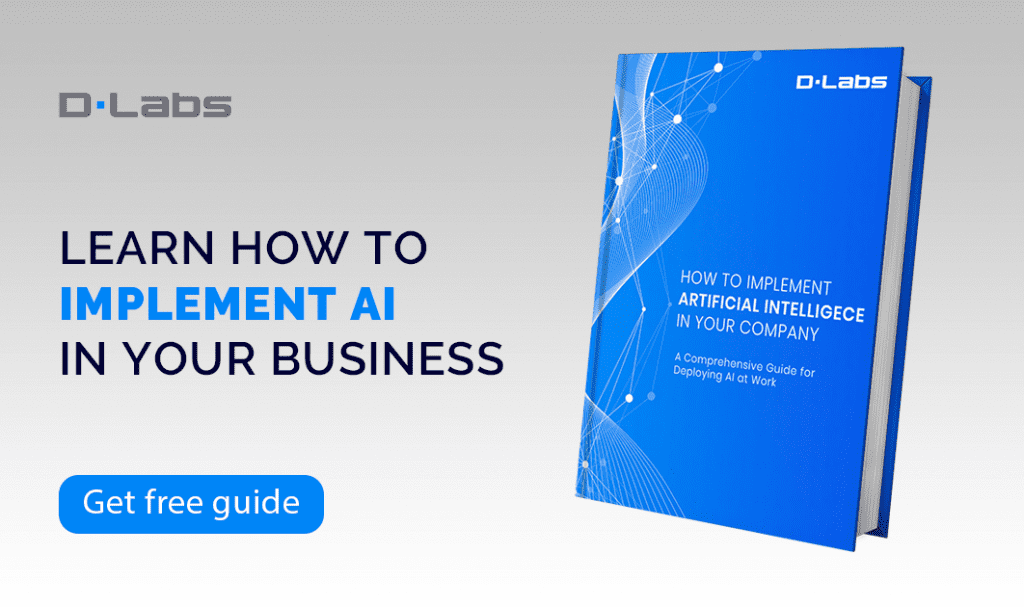Are you looking to tailor AI technologies to meet your unique challenges? Fine-tuning could be the answer. The method refines pre-trained models (like GPT) to perfectly align them with a specific objective. That said, it’s important to know that fine-tuning isn’t one-size-fits-all.
In this article, we’ll take a thorough look at fine-tuning. We’ll demystify how it functions, illustrating the process with clear, relatable examples. You’ll also learn about its diverse applications in various sectors and understand the advantages and potential drawbacks it brings.
We’ve structured this information to be straightforward and comprehensible, ensuring it’s accessible no matter your level of technical knowledge.
Ready to embark on a journey of AI discovery? Let’s dive in!
What Is Fine-Tuning?
Let’s start with a definition.
Fine-tuning is a machine learning process in which a pre-trained model, initially trained on a large and diverse dataset to learn general features, undergoes additional training on a smaller, more specific dataset.
This specialized training allows the model to adapt to specific tasks or data domains.
For instance, when fine-tuning a model like GPT (Generative Pre-trained Transformer), the goal is to adjust the model’s parameters to enhance its performance for a particular task or improve its understanding of a specific data type beyond what was achieved in its initial pre-training.
An example can be fine-tuning the GPT model for medical diagnoses. Initially trained on vast internet text, GPT understands language but not the intricacies of medical terminology. By fine-tuning it on medical records and literature, the model learns to interpret symptoms and medical jargon, becoming adept at diagnosing conditions from textual descriptions.
How Fine-Tuning Works: Using Healthcare As A Case Study
To gain a clearer insight into fine-tuning, let’s walk through the process in detail, using a practical example. We’ll explore how a GPT model is fine-tuned for a specialized healthcare task — in this case, predicting patient outcomes based on EHRs.
The fine-tuning process looks like the following:
- Task Definition: The first step involves defining the specific task for the GPT model. In this scenario, the task is to analyze EHR text to predict patient outcomes, such as the likelihood of readmission, or to identify potential health risks.
- Data Collection: This involves gathering a dataset of de-identified EHRs to protect patient privacy. These records should include narratives, doctor’s notes, and outcomes, providing rich textual data for the model to learn from.
- Data Preprocessing: Preprocessing for GPT involves converting the EHR texts into a format that the model can understand. This may include tokenization, where the text is broken down into tokens (words or subwords), and formatting inputs with special tokens that indicate the beginning and end of texts or separate different sections of the EHR.
- Model Setup: We start with a GPT model pre-trained on a vast corpus of text data. To adapt it for EHR outcome prediction, we might fine-tune the entire model or just the final layers, depending on the size of the healthcare dataset and the computational resources available.
- Loss Function: For outcome prediction, a loss function like binary cross-entropy (for binary outcomes) or categorical cross-entropy (for multiple outcomes) is used. This guides the model in adjusting its predictions to match the actual outcomes, minimizing the difference between predicted and true values.
- Training Configuration: Setting the learning parameters is crucial. The learning rate, batch size, and number of epochs are configured to ensure the model learns effectively from the healthcare data without forgetting its pre-trained knowledge or overfitting to the training dataset.
- Fine-Tuning: The model undergoes fine-tuning on the EHR dataset, learning to apply its language understanding capabilities to predict patient outcomes. This involves adjusting the model’s weights based on the healthcare-specific data and the defined loss function.
- Regularization: Techniques like dropout or weight decay may be employed to ensure the model generalizes well to new, unseen EHRs and does not merely memorize the training data. This helps in maintaining the model’s ability to perform accurately across diverse patient records.
- Evaluation: After fine-tuning, the model’s performance is assessed on a separate validation dataset not seen during training. Metrics such as accuracy, precision, recall, and F1 score can be used to evaluate how well the model predicts patient outcomes based on EHRs.
- Inference: The fine-tuned GPT model is now ready to analyze new EHRs and provide predictions about patient outcomes. It can assist healthcare professionals by offering insights derived from vast amounts of textual data, potentially identifying risks and informing treatment decisions.
By focusing on GPT-type models and their application in analyzing EHRs for outcome prediction, we can appreciate the versatility of fine-tuning in adapting AI to specific needs within the healthcare sector.
This process enables GPT models to extend their natural language processing capabilities to the healthcare domain, providing valuable tools for patient care and outcome analysis.
Examples of Pre-Trained Models for Fine-Tuning
- LLaMA (Language Model Meta-AI): A versatile language model known for its advanced capabilities in understanding and generating complex language structures.
- Google BERT (Bidirectional Encoder Representations from Transformers): BERT excels in understanding the context of words in sentences, making it ideal for tasks like BERT sentiment analysis and question-answering.
- Google T5 (Text-To-Text Transfer Transformer): This model adopts a unified approach by converting all NLP tasks into a text-to-text format, providing versatility in language understanding and generation.
- OpenAI GPT Series (Generative Pre-trained Transformer): Known for its exceptional language generation capabilities, the GPT series is widely used for applications ranging from chatbots to content creation.
Fine-Tuning GPT Models Using OpenAI’s API
From our observations, we can see that most questions about fine-tuning are related to the GPT model, so let’s focus on that.
In the previous example, we also focused on GPT, but we presented a universal approach that would work regardless of the model. However, if you want to fine-tune the GPT model specifically (using its API), it’s worth following the directions provided in the official OpenAI documentation.
What do they suggest? Let’s dive into an example of GPT model tuning based on the OpenAI approach, this time using a customer service bot as an example.
1. Prepare a Dataset
Create a dataset of examples in the format expected by the OpenAI API. It should consist of JSONL files (JSON Lines format), where each line is a separate JSON object representing a prompt and a completion (the desired response from the model).
For instance, if you’re building a customer service bot, your dataset might contain various customer inquiries about product features, and each inquiry would be paired with an informative response, just as a customer service representative would provide.
2. Upload Dataset
Upload this dataset to OpenAI’s platform. The platform will have a specific method for uploading these datasets, typically through their website or via an API call.
In the context of our customer service bot, this means uploading files that contain the question-and-answer pairs, effectively giving the platform the material needed to train the bot.
3. Create a Fine-Tuning Job
Using the OpenAI’s Files API, create a fine-tuning job by specifying the dataset to use and various parameters for the fine-tuning process, such as the model (e.g., `davinci`), the training and validation splits, and other configuration options.
For the customer service bot, this step would define the parameters that are best suited for handling customer queries, such as response accuracy and tone.
4. Train the Model
The actual training of the model occurs on OpenAI’s servers. You can monitor this process through the API. In our example, during this stage, the customer service bot is learning how to respond to customer inquiries effectively based on the training examples it was given.
5. Evaluate the Model
Once training is complete, evaluate the fine-tuned model. This helps to determine if the model meets your needs. For the customer service bot, this would involve assessing how accurately and helpfully the bot responds to a range of customer inquiries like those used in the training dataset.
6. Use the Fine-Tuned Model
Once you’re satisfied with the fine-tuned model, you can start using it by making API calls similar to how you would with the base ChatGPT model but specifying your fine-tuned model version.
In our example, this means integrating the bot into your customer service system, where it can start assisting customers with their inquiries based on its fine-tuned knowledge.
When to Use Fine-Tuning
Fine-tuning is a powerful technique to adapt general machine learning models for specific tasks or improve their performance in particular areas.
Generally, it’s recommended to consider fine-tuning when you have a clear and specific need that general models can’t adequately address. However, it’s important to recognize that fine-tuning requires a significant investment in terms of time, data, and computational resources.
For text generation models, like OpenAI’s GPT, fine-tuning can be particularly beneficial for specialized applications. OpenAI suggests exploring prompt engineering and prompt chaining first, as these methods can often yield improved results without the complexities of fine-tuning.
This approach is advantageous because it has a faster feedback loop, allowing for quicker iterations and optimizations. However, when should fine-tuning be considered?
Here are some examples:
- Specialized Requirements: When the task at hand is highly specialized, such as legal document analysis or technical content generation, where generic responses are insufficient.
- Enhanced Performance: When initial methods like prompt engineering don’t meet the required performance or accuracy levels, fine-tuning can offer a more targeted approach.
Ultimately, the decision to fine-tune should be based on the balance between the desired outcome, the available resources, and the limitations of existing model capabilities.
7 Common Use Cases of Fine-Tuning
Fine-tuning has a wide array of applications in enhancing machine learning models for specific tasks. Here are some practical use cases:
- Adapting Language Style and Tone: Fine-tuning can adapt a content generation model to write in a playful, informal style suitable for a children’s storytelling app or a concise, factual manner for news summarization.
- Text Classification: Models like BERT can be fine-tuned for various text classification applications, including sentiment analysis, spam filtering, and categorization.
- Enhancing Accuracy for Specialized Topics: It’s particularly useful in improving a model’s accuracy in specialized or niche domains. For instance, a legal advisory chatbot could be fine-tuned to provide more accurate and legally compliant advice or a medical AI assistant could be trained to give more precise health recommendations based on the latest medical research.
- Resolving Complex Prompt Interpretation: Fine-tuning helps in situations where models need to interpret and respond to complex, multi-part prompts. An example could be training a virtual event planner to understand and execute detailed event organization tasks that involve various steps and considerations.
- Machine Translation: While models like BERT and GPT-3 are proficient in translation, fine-tuning them in specific languages can yield more accurate translations.
- Managing Specific Customer Interactions: In customer service, fine-tuning can ensure that AI systems handle unique or uncommon customer scenarios appropriately. This might involve training a model to recognize and respond empathetically to customer complaints in a mental health support context, where sensitivity and context are crucial.
- Developing New Skills or Capabilities: Fine-tuning can teach models entirely new skills or tasks that are difficult to encapsulate in a simple prompt. For example, it could be used to train a model to create complex financial models or forecasts based on evolving economic indicators, a task that requires deep understanding and analysis beyond general prediction capabilities.
Fine-Tuning: Pros and Cons
Pros of Fine-Tuning
- Enhanced Specificity: Fine-tuning allows models to be tailored to specific tasks, styles, or domains, enhancing their effectiveness in specialized applications.
- Improved Accuracy: It can significantly improve the accuracy of models in handling particular types of data or queries, especially in niche areas.
- Personalization: Fine-tuning enables the personalization of models to suit unique user preferences or business requirements.
- Leveraging Pre-Trained Models: It builds on the vast knowledge base of pre-trained models, saving time and resources compared to training a model from scratch.
Cons of Fine-Tuning
- Resource Intensive: Fine-tuning, particularly in NLP, requires considerable computational resources and expertise, potentially limiting its accessibility for smaller entities or individuals.
- Risk of Overfitting: There’s a significant risk that the model may become overly specialized to the training data, affecting its performance on new, unseen data. This is balanced against the risk of underfitting, where insufficient training leads to poor model performance.
- Demanding Data Requirements: Effective fine-tuning requires a substantial amount of relevant, high-quality data. Selecting and preprocessing this data, including crucial steps like tokenization, can be challenging and directly impact the model’s performance.
- Time-Consuming Process: The entire cycle of fine-tuning, from data preparation to model training and evaluation, is often a lengthy and labor-intensive process, demanding considerable time and effort.
Wondering if Fine-Tuning is Right for Your Business? Schedule a Free AI Consultation.
Fine-tuning is a powerful solution that can transform pre-trained models like GPT to meet specific business needs.
While it offers enhanced accuracy and customization, understanding whether it’s the right fit for your unique challenges is crucial. If you’re contemplating whether it’s the best choice for your unique challenges, we’re here to guide you.
Schedule a free AI consultation today to gain valuable insights and advice. We’re eager to help you make the best decision and unlock the full potential of AI for your business.





